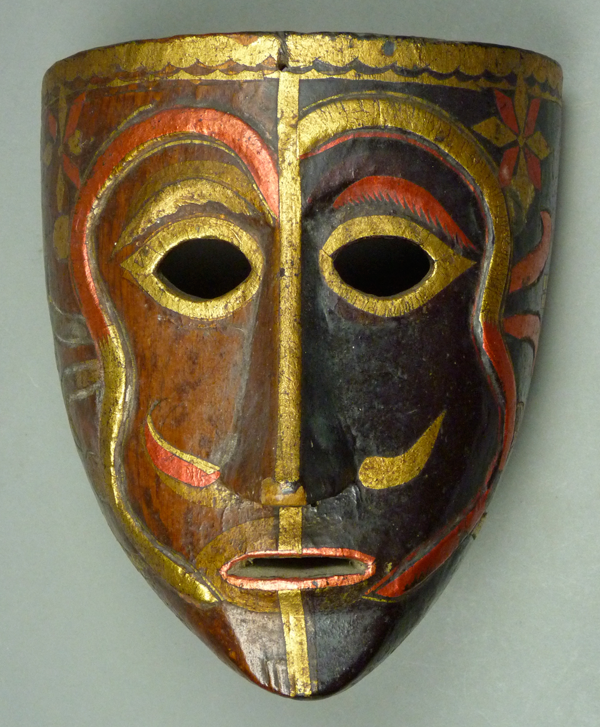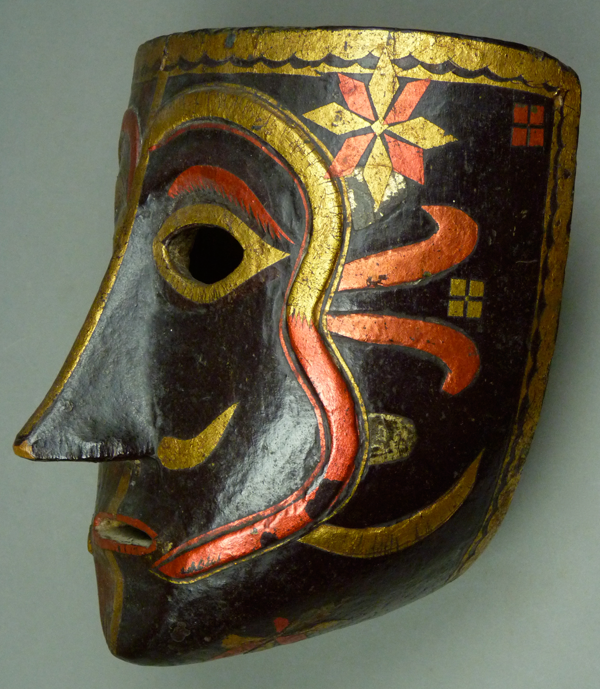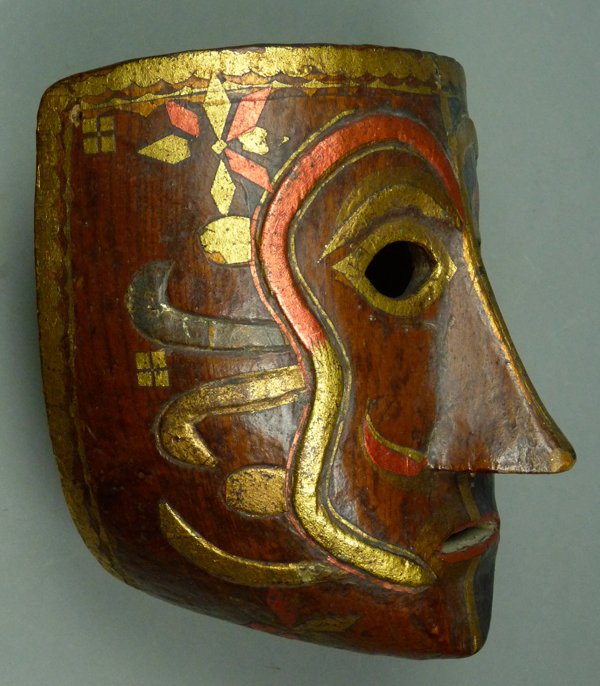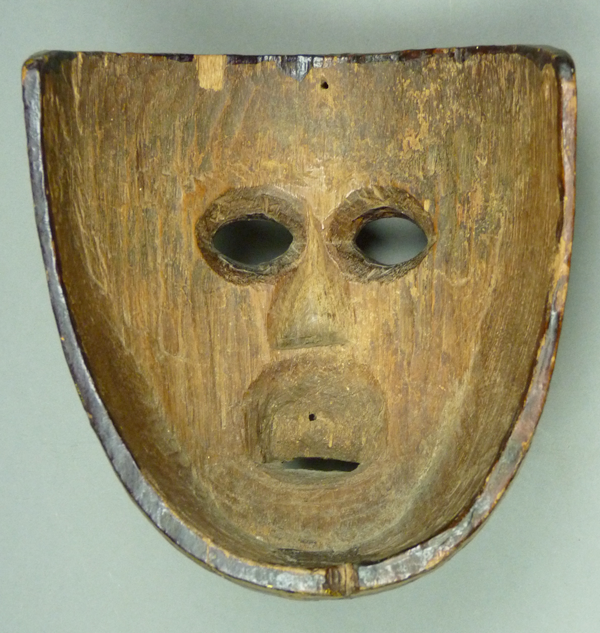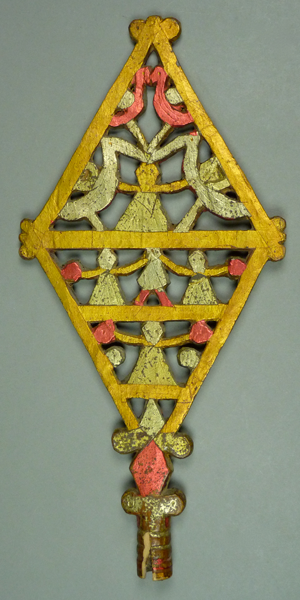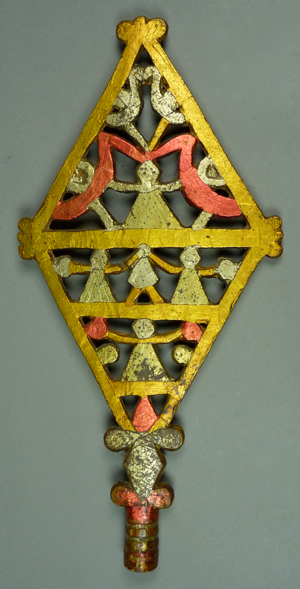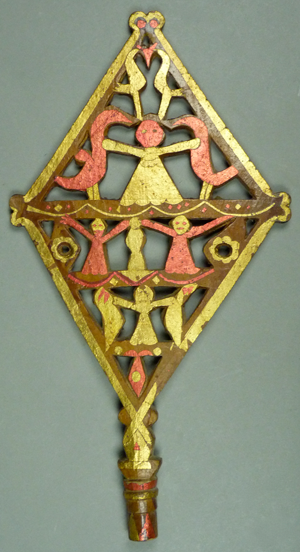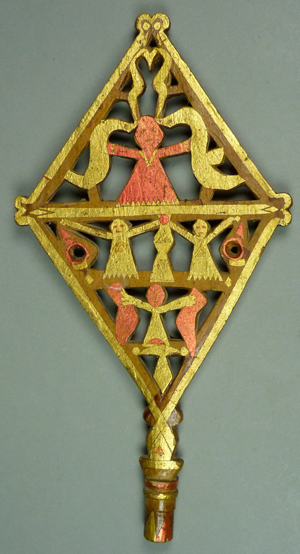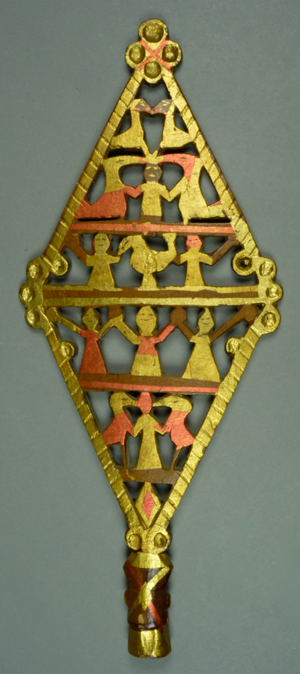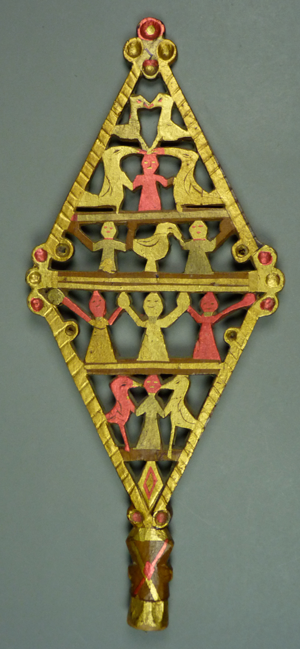Sorting through my masks to prepare the last few posts, I collected an assortment of related material. I will draw from this collection for the present post and a few others over the coming weeks, while the previous related masks are still fresh in our minds. I will begin with a very attractive mystery mask that I bought from Spencer Throckmorton in 1996, along with with three carved wooden wands that would have been carried by the dancers. The mask was said to be from the Mexican state of Hidalgo, and came with no other information. I have never seen a mask exactly like this in any other collection or in any book, although it vaguely resembles the Carnival Moor masks in recent posts. Because I have seen Matachines dancers elsewhere who carried characteristic dance wands, I wondered if this mask had been worn by a Matachin dancer. Here is the mask.
All of the decorative elements on the mask, as well as those on the dance wands, were created with shiny cut paper.
Looking at the mask with fresh eyes after it lay protected in a box for the past twenty years, I was most interested to notice that the face is divided into two halves—one side stained reddish brown and the other side painted black. This alerted me to the probability that this was the face of a supernatural being, and one that straddled some polarity such as life and death (the living dead who appear during Todos Santos or Semana Santa) or good and evil (such as Diablos).
The designs on these masks do also remind one of those on masks of Carnival Moors.
The expression of the mouth suggests that this mask represents the spirit of someone who has died. This is that “lost” look that we saw on some of the Xantolo masks.
There is significant staining from use on the back of this mask , and one can see a dramatic contrast between the color inside the rim and the natural color of the chipped area at the top edge.
The dance wands that accompanied this mask portray human figures that resemble the paper cutouts used by Otomí healers in Hidalgo; these have been described by James Dow (1986). Therefore the history that this collection of objects is from Hidalgo seems credible.
http://www.amazon.com/The-Shamans-Touch-Symbolic-Healing/dp/0874802571
Here is one of those wooden dance wands, decorated in contrasting colors on both sides.
Two others follow and likewise these are decorated on both sides.
There is a strong tendency for the elements on the two sides to be decorated in opposite colors. This reminds one of the division of colors on the face of the mask, leading to the use of opposite colors on the two halves of the face.
A major theme of the art on the dance wands is of the close interaction between humans and birds, or perhaps between their spirits.
Another perspective, that of duality or dualism, alerts us to the front versus back dualism of these dance wands.
I should add that the ordinary Matachines dancers in most Mexican Indian cultures do not wear masks, although there are special roles where masks are customary, such as Abuelos (grandfathers) and Toritos (bulls). However, masks are worn by Matachines dancers in the area of the Huasteca.
Jacques Galinier, in his book The World Below: Body and Cosmos in Otomí Indian Ritual (1997 in French and 2004 in English translation, page 221-225), reported that the Otomí define three axes for dualism—”right/left, front/back, and high/low.” Furthermore, things can be divided into “God’s half and the Devil’s half.” We see this latter perspective reflected in the mask, while the dance wands reflect the front/back duality. On page 111 Galinier told of an Otomí shaman cutting bark paper into the shapes of eagles and vultures and then pouring the blood of a sacrificed turkey over the cutout images. The dance wands apparently depict a sacred interaction between human figures or spirits and birds. Mexican Indian religion tends to enhance our awareness of living in a world with magical others—birds, insects, land and marine mammals, fish, and reptiles.
In summary then, this set of masks and wands is a mystery from the Huasteca area of Mexico, and an exquisite mystery at that, reflecting obvious Otomí religious and cultural aspects.
Next week I will pull out a few additional masks from the Santiagueros dance.

